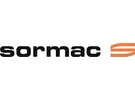Automation to reduce human labor, increase efficiency, and maximize raw material use. When designing new machines and optimizing existing solutions, that is an essential focus for Sormac, a Dutch engineering company specializing in vegetable processing machinery. "Last year, for instance, we introduced a fully automatic version of the PC-55 bell pepper coring machine we'd previously brought to market," says Jeroen Thijssen, Research & Development Team Leader.
 © Sormac
© Sormac
"The semi-automatic PC-55 is efficient and performs many tasks. We've now combined that with human labor replacement via robotization. The bell peppers are supplied in bulk but are automatically fed, one by one, into the machine. It uses vision technology to check the fruit's orientation, which the robotic arm then picks up and places in the machine. The machine de-seeds and slices the bell pepper into the desired shape – rings, wedges, or cubes."
Continuity
ROI is crucial when developing a new machine, but, notes Jeroen, continuity is becoming increasingly important for customers. "That means consistently delivering predictable quality independently of the worker availability. Minimizing manual labor in the factory is the broad objective. You can do that via automation but also by designing a production line that you can clean less intensively and more quickly. Also, smart designs can shorten changeover time, which is good for continuity," he says.
 © Sormac
© Sormac
Hygiene
Sormac focuses on building machines for products like leafy greens, carrots, onions, and potatoes. It has noticed increasing attention to food safety and hygiene. "To respond to this, we're going back to the beginning: how do you design machines that are easy to clean? Which parts do you use, and how do you prevent microbiological growth? We're also looking at automating repetitive cleaning actions. An example is our vegetable washing machines' built-in flush-in-place function."
 © Sormac
© Sormac
AI product recognition
Production floor experience and know-how can be challenging. "To support customers in this, Sormac has developed OptiPro," says Jeroen. "This AI tool can detect errors early on." When, say, lamb's lettuce and spinach, which look similar, are mixed up. "If, for instance, lamb's lettuce goes over the line where spinach is supposed to be packed, the system will signal an anomaly. The line controller can then respond to that. New technologies offer more and more possibilities for fully automated production lines," Jeroen concludes.
For more information: Sormac B.V.
Sormac B.V.
Tel: +77 351 84 44
sales@sormac.nl
www.sormac.com
